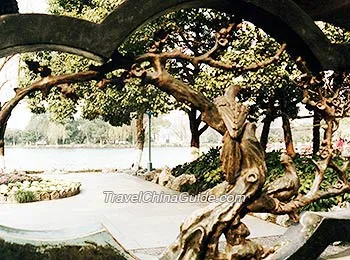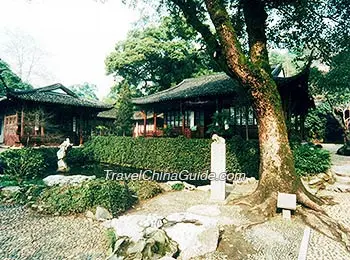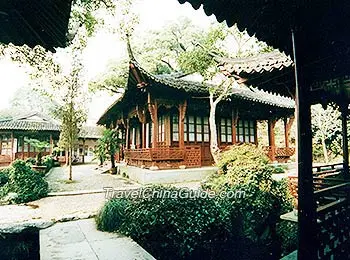Solitary Hill
 |
| A big plum tree on Solitary Hill |
Hangzhou Solitary Hill, situated at the northwestern corner of West Lake, is 38 meters (about 125 feet) above sea-level, and covers an area of 300 mu (nearly 50 acres). It is the lowest summit, compared to other hills around West Lake, but it is also the biggest island in the lake, and the only natural island as well.
Solitary Hill got this name because it is surrounded by water, standing solitarily in West Lake. It can also be called Solitary Island, for it is a lonely island rather than a hill. Its other name: Plum Blossom Island, originates from the flourishing plum blossom planted on the hill.
Are you eager to know the story of 'Plum wife and crane son'? Lin Bu, also called Lin Hejing, was a real hermit and a talented poet in the Northern Song Dynasty (960-1127). Besides composing poems and paintings, he spent all his spare time planting plum trees and raising cranes. He didn't get married all his life, and as a result, people took plum blossom as his wife and considered cranes his children. The place he lived in seclusion was called Solitary Hill (Gu Shan).
|
|
The best time to visit the hill is winter or early spring, since you can enjoy the plum blossom as well as the usual sights.
How to get to Solitary Hill
Hangzhou Bus / Metro Search
| Entrance Fee | Free |
|---|---|
| Opening Hours | All day |
Recommended Nearby Attractions
2. Memorial Hall of Yu Quyuan
3. Tomb of Qiu Jin

